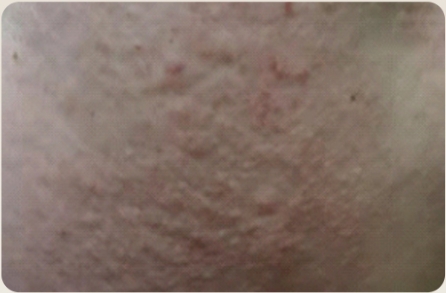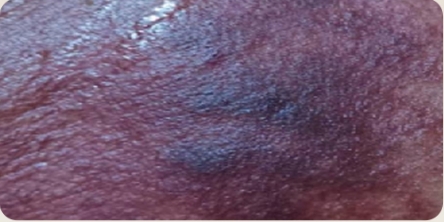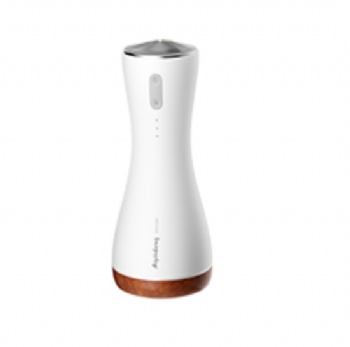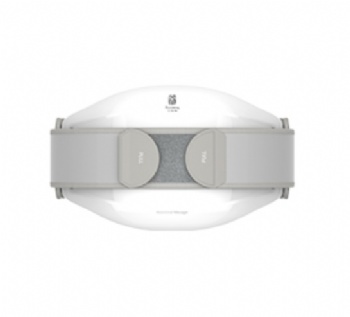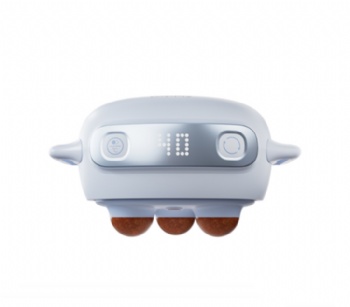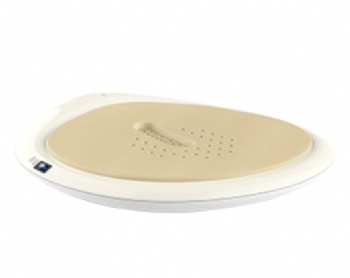News
Gua Sha
What is Gua Sha?
In traditional Chinese medicine (TCM), the six major therapeutic techniques are Bian (stone therapy), Zhen (acupuncture), Jiu (moxibustion), Yao (herbal medicine), Daoyin (qigong guidance), and Anqiao (massage). Bian therapy, namely Gua Sha with Bian stones, ranks first among these techniques and is known as "the mother of acupuncture and moxibustion, and the ancestor of Gua Sha point-pressing therapy".
The so-called "Gua" (scraping) refers to an external TCM therapy that uses a heat-clearing and toxin-removing water buffalo horn Gua Sha tool or a qi-nourishing and mind-calming Bian stone Gua Sha board, combined with a medium that activates blood circulation and dissipates blood stasis. Following the meridian pathways in TCM, selecting specific meridians and acupoints, practitioners scrape the body surface to extract metabolic waste and pathological products from the microcirculation, bringing them to the skin's surface.
The "Sha" refers to metabolic waste and stagnant blood separated from the microcirculation. It exists between subcutaneous and muscular tissues as "abnormal blood" containing toxins in the body.
Why Gua Sha?
"To get rich, build roads first." Similarly, to achieve health, longevity, and abundant energy, one must first "clear the roads" of the human body. Imagine a city with blocked roads: garbage cannot be transported out, piling up and releasing foul odors that pollute the environment; meanwhile, urgently needed supplies cannot enter, leaving citizens without food or provisions. As a result, the city is partially paralyzed—this is urban "sub-health."
If this were not a city but a human body, what would happen with blocked "roads"? Similarly, metabolic waste cannot be fully excreted, accumulating to form various lumps, nodules, or even tumors. Blocked pathways also prevent essential nutrients from reaching their destinations, leaving people listless and low on energy—physical sub-health. If one ignores meridian blockage and only supplements nutrients, the body may develop "internal heat" and become "unable to absorb nourishment despite supplementation"—a state of deficiency that resists tonification.
How to Assess Health Through Sha Manifestations?
| Check the vividness of the sha color | |
| Sha colors that are relatively dull usually indicate a cold pattern; While relatively vivid sha colors generally indicate a heat pattern. |
| Check Sha Density | |
| Sparse, scattered spots: minor issues, quick recovery. Dense, large patches: deep pathogenic invasion, long-term care. |
| Check Sha Color | |
| Sha Color:Normal pink. Issues:Seen in health-conscious people or those with minor problems. Usually "illness on the surface" Advice:Scrape 1-2 times a month for health care. |
| Sha Color: Deeper than pink, brighter red. Issues:Internal heat. Advice:Avoid late nights, drink more water, eat light. Scrape Bladder, Heart, Liver & Stomach meridians. Re-scrape till color fades, then use moxibustion. |
| Sha Color:Light and Dark Purple Issues: Light purple indicates stasis and qi-blood deficiency, poor circulation, or long-term stasis with sluggish qi-blood flow. Dark purple means qi-blood stasis but sufficient supply, faster recovery. Advice:Scrape 4 to 5 times a month, maintain long-term conditioning. |
| Sha Color: Obvious, large patches, close to skin tone. Issue: Severe qi-blood deficiency/depletion. Advice: Eat qi-blood-nourishing foods; scrape 4–5 times a month to tonify spleen-stomach. |
| Sha Color: Black lumps appear in many areas. Issue: Pathogenic factors deeply invade, reaching zang-fu organs. E.g., black lumps on Heart Meridian/Pericardium Meridian signal heart problems. Advice: Scrape 4–5 times a month, long-term. |
| Sha Color: No sha appears during scraping, but cyan bruises show on the scraped area the next day. Issue: Liver blood deficiency. |
Sequence, Direction, Time and Treatment Course of Gua Sha
Although gua sha is an excellent conditioning method, since it involves direct contact with the skin, it should not be treated carelessly. So, what is the proper sequence for gua sha? How long should a gua sha session typically last? And what should be the interval between sessions? Understanding these aspects can make the entire gua sha process safer and more effective.
[The Sequence of Gua Sha]
Generally, the sequence for gua sha scraping is as follows: head, neck, back (thoracic vertebrae, lumbar vertebrae, sacral vertebrae), chest, abdomen, upper limbs, and lower limbs. It should be noted that, except for the acupoints on the Ren Meridian (the anterior midline of the body) and the Du Meridian (the posterior midline of the body), such as Tanzhong, Qihai, and Baihui, most other acupoints are symmetrically located on the left and right sides of the body. For instance, there are two Shenshu acupoints on the left and right of the waist, and one Neiguan acupoint on the inner side of each of the left and right upper limbs. When performing gua sha for conditioning, except for the acupoints on the Ren and Du Meridians, other acupoints should be scraped in a balanced and symmetrical way. Usually, complete the scraping of one area (meridian acupoints) before proceeding to scrape another area (meridian acupoints).

【The Direction of Gua Sha】
Scrape in a single direction, from top to bottom and from the proximal end to the distal end of the limbs.
【The Duration of Gua Sha】
Generally, the number of scrapes for each area should be within 20 times, depending on the appearance of subcutaneous petechiae. If subcutaneous petechiae do not appear, do not force it. If subcutaneous petechiae continue to appear after the initial appearance, keep scraping until it stops.
The pressure during gua sha should gradually increase from light to heavy, with even force application.
Usually, it is advisable to select 3-5 areas for one patient.
The scraping duration should be flexibly adjusted according to the patient's age, physical condition, illness condition, course of disease, and the area where gua sha is performed.
For daily health-promoting gua sha, the operation generally should not exceed 30 minutes; for local treatment, it usually takes 10-20 minutes.
【Frequency and Treatment Course of Gua Sha】
After a patient has developed sha (subcutaneous petechiae) through gua sha therapy, the interval for the next gua sha session should be 3-6 days, depending on the complete disappearance of the sha spots on the skin. Generally, 7-10 sessions make up one treatment course.
For preventive gua sha (usually without the need to cause sha on the skin), it can be done once every 1-2 days.
【Precautions Before and After Gua Sha】
Disinfect gua sha tools with 75% alcohol before use.
Keep indoor temperature around 25°C during gua sha.
After sha appears, have the patient drink warm water (preferably light sugar water) and rest for 15-20 min.
Avoid cold-water baths within 1 day of sha formation; hot-water baths are okay 2-3 hours later. Don't wash hair on the day of scalp gua sha.
Keep out of cold and wind after sweating during gua sha.
Wipe off gua sha oil from the treated area with a tissue or towel after gua sha.
Combine gua sha with regular meds for chronic diseases; seek prompt medical help for acute ones.
【Contraindications and Cautious-use Conditions for Gua Sha】
Gua sha is prohibited on the abdomen and lumbosacral region of pregnant women, and on women's nipples. (Pregnant women are not recommended to receive gua sha therapy. If gua sha is truly necessary, seek professional operation.)
Gua sha is contraindicated for diseases with a bleeding tendency, such as leukemia and thrombocytopenia.
For those with highly sensitive skin or skin diseases, like skin with broken ulcers and the pustular part of boils, gua sha is not allowed.
Gua sha is prohibited on fresh or unhealed wounds, fracture sites due to trauma, and the head and neck of infants with unclosed fontanelles.
Gua sha is not to be used on the five sense organs (eyes, ear canals, nostrils, tongue, mouth, lips) and the two yin regions (anterior and posterior).
People who are drunk, extremely hungry, overly full, extremely thirsty, or overly fatigued should not receive gua sha to avoid syncope during the procedure.
Gua sha is prohibited for those with severe heart disease and heart failure, those with kidney disease and renal failure, the abdomen of patients with ascites due to liver cirrhosis, severe diabetes patients, and those with severe generalized edema.
For those who are elderly with long-term illness, extremely weak, or emaciated, gua sha should be used with caution. (It is advisable to first use moxibustion to replenish qi, and then use gentle manipulation for health-promoting scraping.)
Gua sha techniques are prohibited at sites where large blood vessels are visible. Instead, use the edge of the tool to avoid the vessels and apply gentle point-pressing manipulation. For patients with varicose veins in the lower limbs or lower-limb edema, the scraping direction should be from bottom to top (using the thick edge) with gentle manipulation.





